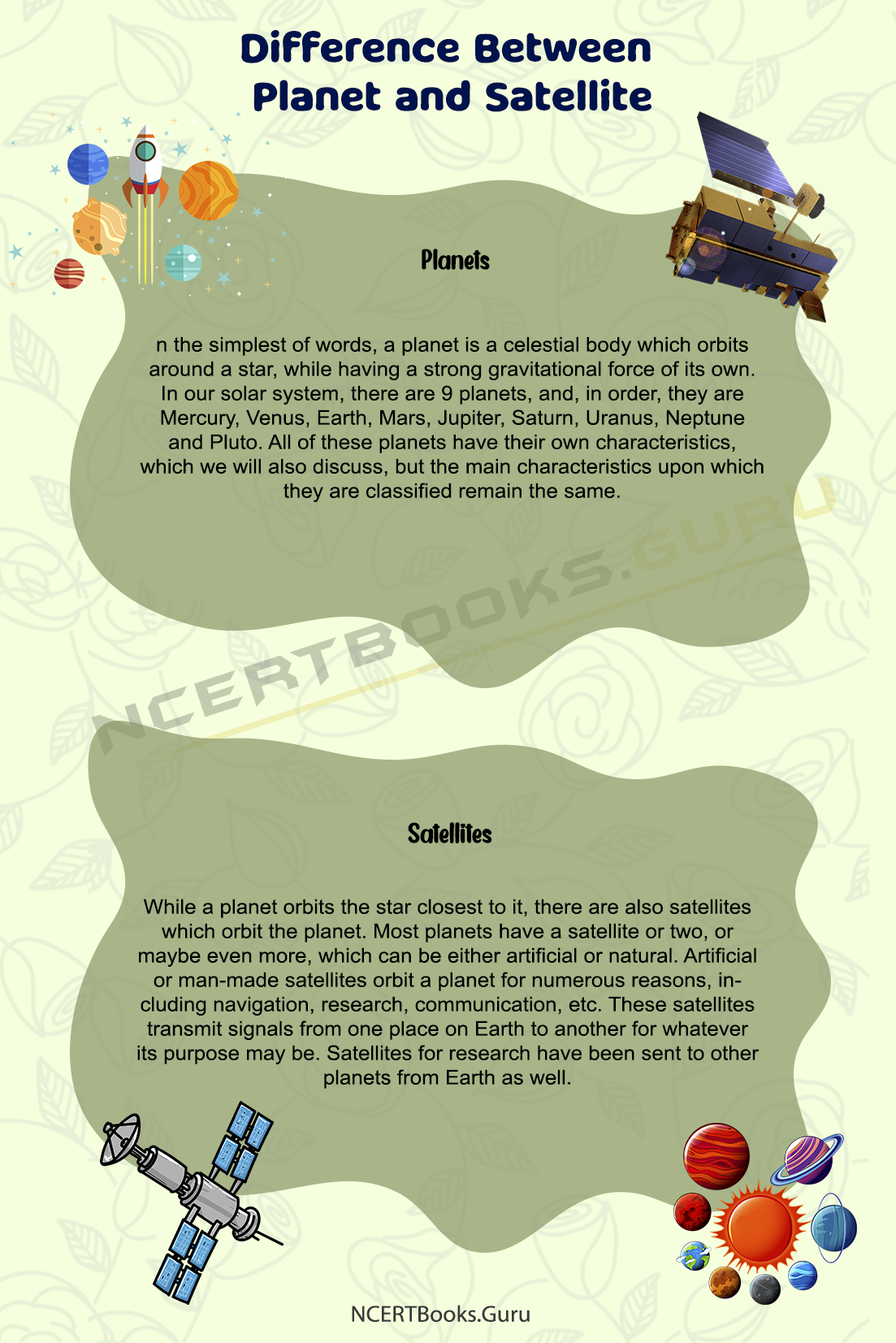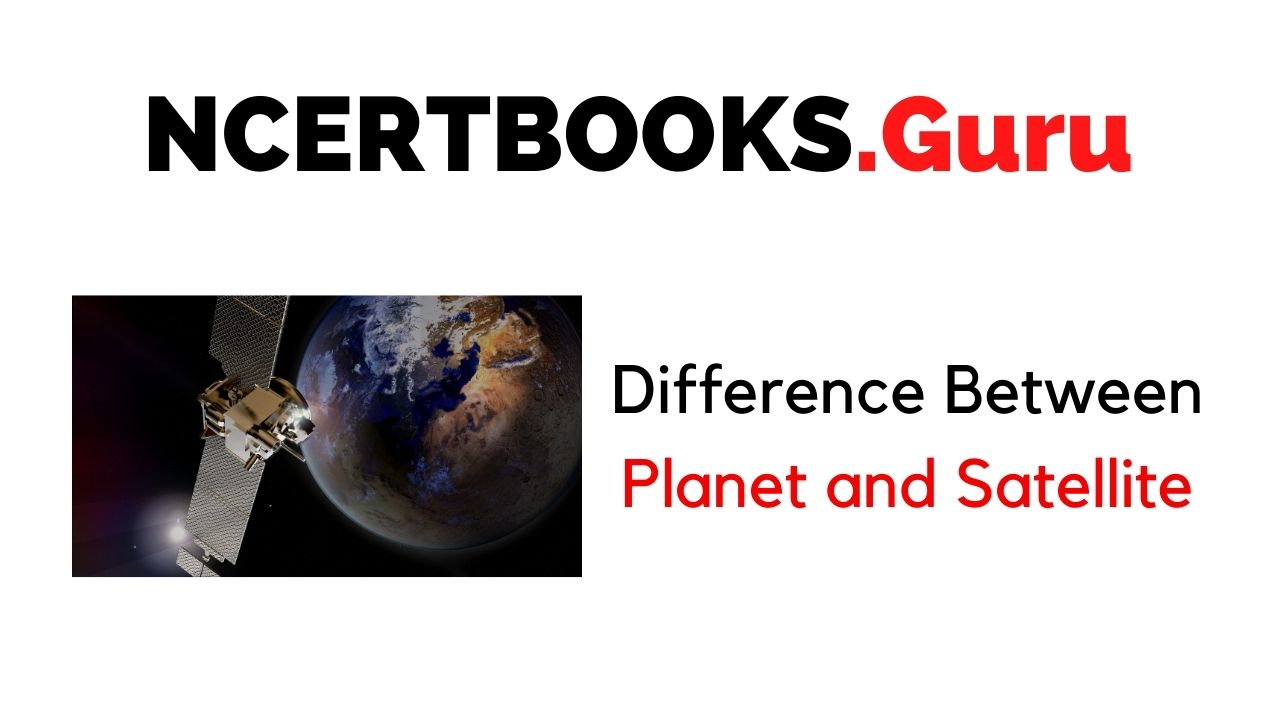There are hundreds of things we can see in the sky every night, thousands of lights shining from millions and billions of light years away. All the shining lights are celestial bodies, be it planets, satellites, moons, stars, comets, or anything else in the night sky. In outer space, we have galaxies, which consist of several planetary systems. The solar system is one such planetary system at the centre of which is the sun, and around it are asteroids, comets, and also the 9 planets and their natural as well as artificial satellites.
While a lot of these celestial bodies may look quite alike from so far away, there are some key differences between all of them. For example, we know how to identify stars by associating them with different constellations, or we can recognise a comet by knowing that it is a moving ball of gas and rock orbiting the sun and it is not stationery. However, for now, we will focus on the difference between planets and satellites.
You can also find differences between articles on various topics that you need to know. Just tap on the quick link available and get to know the basic differences between them.
What is the Difference Between Planet and Satellite
Planets
In the simplest of words, a planet is a celestial body which orbits around a star, while having a strong gravitational force of its own. In our solar system, there are 9 planets, and, in order, they are Mercury, Venus, Earth, Mars, Jupiter, Saturn, Uranus, Neptune and Pluto. All of these planets have their own characteristics, which we will also discuss, but the main characteristics upon which they are classified remain the same.
There are 3 criteria that a planet is required to meet in order for it to be called a planet, and these are that;
- It should orbit a star.
- It should have enough mass so as to be of a roughly round shape.
- The area around its orbit is fairly clear of any other planets.
While this is a highly broad classification of what a planet is, it is sufficient for people who do not have a background in astronomy to understand.
Satellites
While a planet orbits the star closest to it, there are also satellites which orbit the planet. Most planets have a satellite or two, or maybe even more, which can be either artificial or natural. Artificial or man-made satellites orbit a planet for numerous reasons, including navigation, research, communication, etc. These satellites transmit signals from one place on Earth to another for whatever its purpose may be. Satellites for research have been sent to other planets from Earth as well.
Natural satellites are also called moons, and Earth has only one of these, as we all know. While smaller planets in the solar system like Mercury and Venus have no moons, Mars has 2, Jupiter has about 79, Saturn has 62, Uranus has 27, and Neptune has 14. Astrophysicists, or space scientists, say that moons probably came up from the residual gas and dust that was let off by planets when they were first formed.

Difference Between Planet and Satellite
The primary difference between planets and satellites is that planets cannot be created by humans. Satellites that orbit other planets can be artificial or man-made for purposes of research or others, as mentioned before. Planets are not something that can be constructed and sent into space as man pleases.
Another difference between planet and satellite is in the way both are formed. Planets are formed from the gas and dust which comes from stars, and satellites (natural satellites) are formed from the remaining gas and dust which comes from planets after their formation. Lastly, planets revolve around or orbit the sun, while satellites orbit the planet from which they came.
